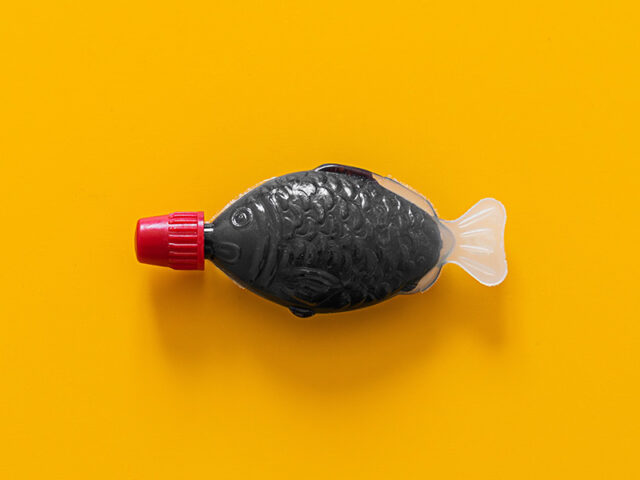South Australia has introduced the world’s first ban on the small, fish-shaped soy sauce dispensers that have become a fixture in takeaway sushi packaging worldwide. The measure is part of a broader prohibition on single-use plastics that came into effect on 1 September.
The polyethylene dispensers, known in Japan as shoyu-tai or “soy-sauce snapper,” were first created in 1954 by Teruo Watanabe, founder of Osaka-based Asahi Sogyo. Branded the “Lunch Charm,” they capitalised on the emergence of industrial plastics as a low-cost alternative to glass or ceramic condiment containers, and over the decades they became synonymous with takeaway sushi packaging globally.
Under the South Australian legislation, pre-filled soy sauce containers with a lid, cap, or stopper containing less than 30 millilitres will now be prohibited. Plastic sachets remain permitted, but the government expects bulk dispensers or refillable alternatives will replace single-use portions in foodservice outlets.
South Australia’s environment minister, Dr Susan Close, said the move was designed to cut down on highly disposable plastics that frequently enter the litter stream. “Their small size means they’re easily dropped, blown away, or washed into drains, making them a frequent component of beach and street litter,” she said. “They’re a ‘convenience packaging’ item that can be replaced with bulk or refillable condiment solutions or more manageable alternatives, meaning their elimination directly reduces the volume of single-use plastic entering the waste stream.”
The new rules also extend to other packaging categories, including plastic cutlery and expanded polystyrene food containers such as pre-packed instant noodle bowls.
Marine experts have warned of the risks posed by these small dispensers to ocean wildlife. Dr Nina Wootton, a marine ecologist at the University of Adelaide, noted that “if it hasn’t already been broken down into microplastics yet and it’s floating around in its whole form, then other organisms that eat fish that size could think it is a fish and then eat it.”
Campaign groups have welcomed the ban but called for wider systemic change. Cip Hamilton, campaign manager at the Australian Marine Conservation Society, described it as “an important small step towards reducing plastic pollution,” but added: “What our oceans really need is for state and federal governments to introduce strong laws that reduce plastic production and consumption and hold businesses accountable for the products they place on shelves, otherwise Australia’s marine life and coastlines will continue to suffer under mountains of plastic pollution.”
South Australia has often been at the forefront of packaging and recycling legislation in Australia, having been the first state to introduce a container deposit scheme in 1977. The new ban places further regulatory pressure on foodservice packaging suppliers and retailers to transition towards reusable and refillable models.











